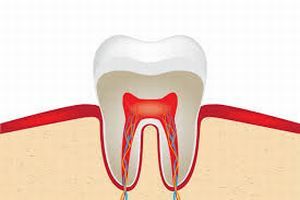 Parodont( Latin para - around, dentes - teeth) - the entire complex of soft and hard tissues that surround the tooth.
Parodont( Latin para - around, dentes - teeth) - the entire complex of soft and hard tissues that surround the tooth.
It includes the gum, compact and spongy substance of the bony alveoli of both jaws, periodontium, cement of the tooth root.
 Contents of the Structure of the structure, functional units
Contents of the Structure of the structure, functional units
- Periodontitis - was a tooth so it floated
- Development of periodontitis
- Odontogenic inflammatory diseases
- Complex of inflammatory diseases
Features of the structure, functional units
Elements forming the periodontium,can be divided into bone structures and soft tissues.
The soft tissues are:
- Desna .It is a mucous membrane covered with a partially cornificatory, planar, multilayered epithelium. The dermis layer is dense in it and is fused with the alveolus.
- Pectoral papilla ( papilla intradentalis) is a relatively mobile structure that lies between approximal surfaces below the contact point.
- A gingival femur ( free, mobile, marginal gingiva) is a structure whose normal width does not exceed 0.2 mm. It is a thin duplicate of the mucosa that surrounds the cervical teeth and is confined to the bottom by an epithelial junction.
- Zuboepithelial joint - the place of attachment of a free gum to the neck of the tooth. It ensures the tightness of the periodontal and prevents its contamination with the flora of the oral cavity.
- Attached gum is a mucosa that is tightly connected to the alveolar portion of the jawbone. It borders on the top with a marginal gum, and from below with a transitional fold.
- Periodontium is a connective tissue ligament with a special organization of collagen fibers and a neurovascular bundle. The densest part of these fibers is located in the region of the neck of the tooth and is called the circular ligament.
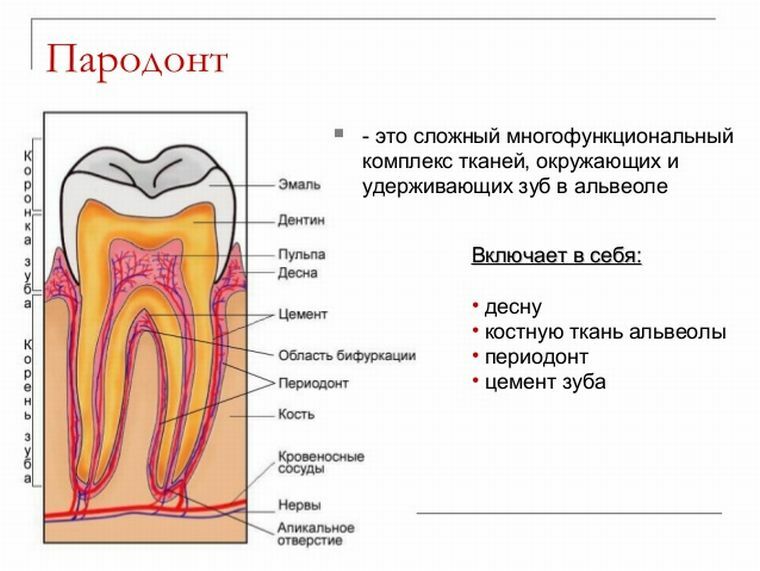
Hard tissues forming the periodontium:
- alveolar bone parts ( pars alveolaris) - jaw bone sections, which are represented by cells( alveoli) repeating the shape of the root of the teeth;
- interdental septum ( septi interdentalis) - bone formations that separate cells for different teeth;
- Interstitial septum ( septi intraradicularis) - bone protuberances inside, which share the space reserved for different roots of multi-rooted teeth( molars).
In terms of histology, the alveolar process of the jaw includes:
- Periosteum( periosteum) is a connective tissue formation that covers the bone.
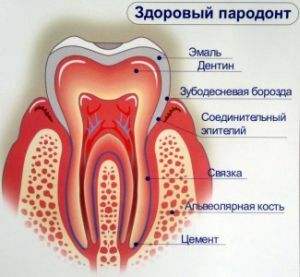
- The compact bone substance is the most mineralized part of the bone, consisting of osteons, which fit tightly together( like coins in a pile).Vessels and nerves pass through the Havers channels - voids in the center of the osteon.
- Spongy bone substance also consists of osteons, but here they do not fit closely, but form a kind of cells. Cells of the spongy substance of the bone contain red bone marrow - the main organ of hemopoiesis( hematopoiesis).The blood supply of spongy bone material is realized by 40% at the expense of its own vessels, and by 60% - due to the vessels of the periosteum.
- Tooth cement is a dense substance having a similar structure with bone tissue and surrounding pulp.
Paradont consists of the following cell types:
- multilayered flat epithelium and vascular wall( endotheliocytes);
- connective tissue: fibroblasts and fibroblasts;
- immunocompetent cells: macrophages, histiocytes, leukocytes, lymphocytes;
- of bone: osteoblasts, osteoclasts;
- cement: cementing, cement-cement, cement-clastic.
The intercellular substance for soft tissues is formed mainly by collagen fibers. The intercellular substance of hard tissues is represented by calcium carbonate( CaCO3).
Functional need for
The periodontium has the following functions:
- Supporting - ensuring reliable fixation of the tooth in the bone. It is achieved with the help of a special structure of the alveoli, the type and method of attaching periodontal fibers to the tooth.
- The depreciating is provided by the buffering effect of collagen in the periodontal composition, and also provides plethora in lymphatic and venous periodontal vessels. All this allows to soften the masticatory load and evenly transfer it to the bone formations.
- Trophic - due to the neurovascular bundles, which are part of the periodontal and bone elements of the periodontal tissue, the nutrition of its tissues is carried out.
- Protective .It is realized primarily with respect to the oral cavity due to the epithelium of the gum and the dentoepithelial attachment. It is also provided with the help of immune cells( histiocytes and macrophages, lymphocytes and leukocytes, tissue basophils, and BAS: cytokines, leukotrienes, interleukins, etc., which trigger an inflammatory response).
- Receptor is responsible for the strength of the chewing pressure. It is realized due to nerve endings in the thickness of the periodontal, which are the affective link of the reflex arc responsible for the force of chewing.
- Plastic is realized in the form of the ability of periodontal tissues to regenerate. Young forms of connective tissue cells( osteoblasts, fibroblasts, cementoblasts) and cells taking part in the lysis of unclaimed formations( or bone corns in bone tissue) - osteoclasts, cementoclasts - are involved in this.
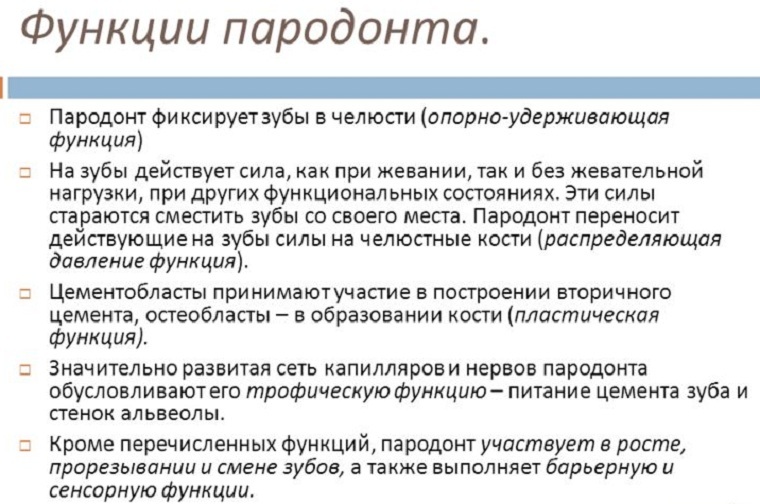
Periodontal diseases and their causes
Periodontal tissues are prone to numerous diseases.
Periodontitis - it was a tooth and it swam
It is an inflammatory disease in which all periodontal tissues are involved. As a result, its supporting, trophic and plastic functions decrease, the teeth become mobile. Periodontitis leads to early tooth loss.
The main characteristics of periodontitis:
- develops osteoporosis with violation of the integrity of the cortical plate of bone and destruction of bone tissue in the vertical direction;
- cyclic flow with a period of remission and exacerbation;
- involvement of marginal periodontal disease in the pathological process;
- violation of dental epithelial attachment.
Diagnostic criteria for this disease:
- symptomatic gingivitis;
- presence of dentogingival pockets;
- destruction of the cortical bone plate;
- osteoporosis of bone tissue and its decrease in the vertical direction.

Development of periodontal disease
Periodontal disease is a dystrophic change in periodontal tissue, mainly affecting bone tissue.
X-ray signs of periodontal disease:
- osteosclerosis and foci of hyperesthesia at the tips of the roots of the teeth;
- bone tissue loss in the horizontal direction;
- preservation of the integrity of the cortical bone plate.
Clinical manifestations:
- endocrine disorders in history( thyroid disease);
- recession of the gums in the absence of tooth mobility;
- wedge-shaped defects;
- dense and cyanotic gingiva;
- hyperesthesia of teeth, itching sensation in the gums;
- preservation of epithelial attachment.
Odontogenic inflammatory diseases
The following diseases occur as a complication of caries:
- Periodontitis - inflammation of the ligamentous apparatus of the tooth.
- Periostitis - inflammation of the periosteum. It manifests itself in the form of an increase in temperature up to 38 degrees, edema and asymmetry of the face, regional lymphadenitis, tenderness in the jaw, hyperemia of the alveolar process from the vestibular side in the region of the tooth group and smoothness of the transitional fold. Treatment is carried out with the help of complex therapy, including antibiotics, antihistamines, antiseptic treatment of the oral cavity. In a number of cases, a periostotomy is performed - dissection of the periosteum in the region of fluctuations( incisio).
- Osteomyelitis - inflammation of the periosteum and bone( compact and spongy substance).It manifests itself as a rise in temperature to 39.5 degrees Celsius, edema and asymmetry of the face. It is possible to develop an inflammatory reaction of the submaxillary and superficial cervical lymph nodes, puffiness and hyperemia of the alveolar process in the region of the teeth group, both from the vestibular and oral sides, the presence of the mobility of several teeth, as well as their painful percussion. In the phase of acute inflammation, the removal of the causative tooth, antibacterial and anti-inflammatory therapy is performed. After 14 days the inflammation passes into a chronic form, and the necrosis area in the bone is organized into a sequestration, which is removed after the end of its formation( 6-12 months).
Complex of inflammatory diseases
Inflammatory gum disease: 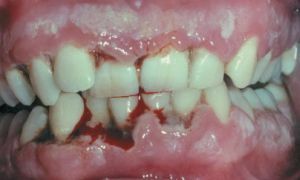
- allergic : vulgar pemphigus, PMS, allergic stomatitis, st. Stevens-Johnson, Lyell, MEE, HRAS;
- fungal : Candida gingivitis;
- viral : acute herpetic gingivostomatitis;
- caused by acute or chronic injury : decubital ulcers;
- infectious : ulcerative-necrotic gingivitis.
Summing up
Parodont realizes the physiological distribution of the masticatory load and its transfer to the buttresses of the bones of the skull. It provides 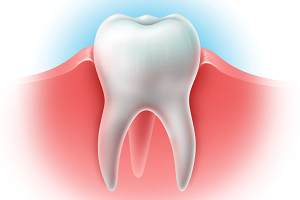 fixation of the teeth in the jawbones and is the main anatomical entity that participates in the chewing act. The inconsistency of periodontal tissue leads to violations of the act of chewing and chopping food, which in the long term provokes the development of traumatic occlusion, the functioning of the TMJ in unphysiological conditions( reduction of interalveolar height with pathological abrasion of the teeth and their early loss) and the development of pathological changes in itKosten, arthritis, deforming osteoarthritis).
fixation of the teeth in the jawbones and is the main anatomical entity that participates in the chewing act. The inconsistency of periodontal tissue leads to violations of the act of chewing and chopping food, which in the long term provokes the development of traumatic occlusion, the functioning of the TMJ in unphysiological conditions( reduction of interalveolar height with pathological abrasion of the teeth and their early loss) and the development of pathological changes in itKosten, arthritis, deforming osteoarthritis).
Insufficient crushing of food also provokes the development of gastrointestinal diseases( gastritis, peptic ulcer, appearance of precancerous conditions and oncological diseases of the digestive tract).Therefore, the condition of periodontium requires careful monitoring, and its disease - timely and comprehensive treatment.
